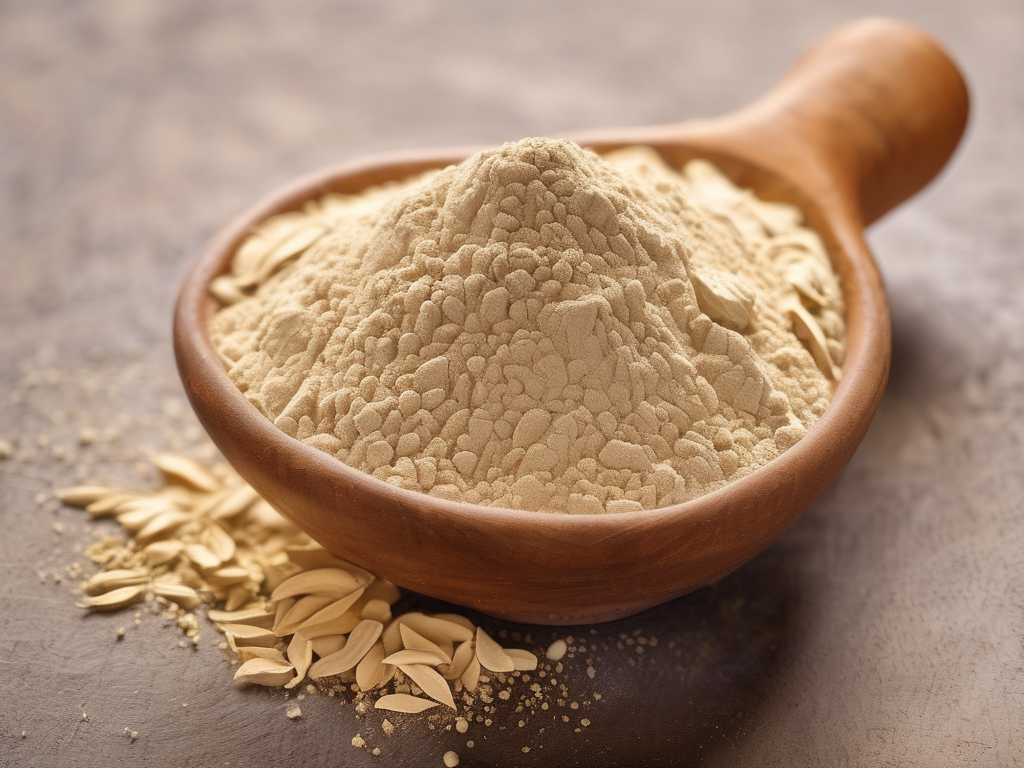
Comprehensive Guide to Preventing Mold Growth on Ashwagandha Powder
Get Your Free Food Safety Cheat Sheet
30 most common foods with instant answers. Print it and stick it on your fridge—completely free!
Comprehensive Guide to Preventing Mold Growth on Ashwagandha Powder
Ashwagandha powder is a popular herbal supplement known for its numerous health benefits, including reducing stress, improving cognitive function, and boosting immunity. However, like any other powdered food product, ashwagandha powder is susceptible to mold growth if not stored properly. Mold growth not only affects the quality and potency of the powder but also poses potential health risks if consumed. In this guide, we will explore effective tips for preventing mold growth on ashwagandha powder to ensure its safety and efficacy. (Ashwagandha powder)
Understanding Mold Growth on Ashwagandha Powder
Mold is a type of fungus that thrives in warm, damp environments and can easily contaminate food products, including powders like ashwagandha. Mold spores are present everywhere in the environment and can quickly colonize powdered substances if the conditions are right. Common factors that contribute to mold growth on ashwagandha powder include:
Factors that Promote Mold Growth
- Moisture: Excess moisture in the air or improper storage conditions can create a humid environment ideal for mold growth.
- Temperature: Warm temperatures facilitate mold proliferation, making it essential to store ashwagandha powder in a cool, dry place.
- Light Exposure: Direct sunlight can promote mold growth on powdered substances, so it is crucial to store ashwagandha powder in a dark place.
- Air Exposure: Exposure to air can introduce mold spores to the powder, emphasizing the need for airtight storage.
Tips for Preventing Mold Growth on Ashwagandha Powder
Ensuring proper storage and handling of ashwagandha powder is key to preventing mold growth and maintaining its quality. Here are some practical tips to help you safeguard your ashwagandha powder from mold contamination:
1. Choose High-Quality Ashwagandha Powder
- Opt for reputable brands that offer high-quality, organic ashwagandha powder to reduce the risk of mold contamination from the source.
2. Store in Airtight Containers
- Transfer the ashwagandha powder to airtight containers, such as glass jars or BPA-free plastic containers, to seal out moisture and air.
3. Keep in a Cool, Dark Place
- Store the sealed containers of ashwagandha powder in a cool, dark pantry or cupboard away from direct sunlight and heat sources.
4. Monitor Humidity Levels
- Use silica gel packs or desiccants in the storage containers to absorb excess moisture and maintain optimal humidity levels.
5. Rotate Stock Regularly
- Use the oldest batch of ashwagandha powder first and rotate your stock to ensure freshness and prevent mold growth on unused portions.
6. Avoid Contaminating Tools
- Use clean, dry utensils to scoop out ashwagandha powder and avoid introducing moisture or contaminants to the container.
7. Check for Signs of Mold
- Regularly inspect the ashwagandha powder for any signs of mold growth, such as discoloration, musty odor, or clumping, and discard if contaminated.
8. Freeze Extra Portions
- If you have an excess amount of ashwagandha powder, consider storing the extra portions in the freezer to extend its shelf life and prevent mold growth.
Conclusion
By following these tips for preventing mold growth on ashwagandha powder, you can ensure the longevity and quality of this beneficial herbal supplement. Proper storage, moisture control, and regular inspection are key practices to safeguard your ashwagandha powder from mold contamination. Remember that mold-contaminated powder should never be consumed, as it can pose health risks. Prioritize food safety and quality by implementing these preventive measures to enjoy the full benefits of ashwagandha powder in your daily routine.
For more information on ashwagandha powder and its benefits, [click here](/food/ashwagandha powder). (Ashwagandha powder)
Related Posts
Here are some other articles you might find helpful:
Authoritative Food Safety References
These agencies and university labs inform every tip and health precaution we publish.
USDA FoodKeeper – Cold Storage Guidelines
Official refrigerator, freezer, and pantry timelines maintained by the U.S. Department of Agriculture.
Visit USDA FoodKeeperFDA Produce Safety Rule & Grower Guidance
Field-to-fridge handling practices that prevent contamination of fruits, vegetables, and leafy greens.
Visit FDA Produce SafetyCDC Foodborne Illness Prevention Hub
Surveillance-backed guidance on pathogens, symptoms, and steps to reduce foodborne illness risk.
Visit CDC Food SafetyUC Davis Postharvest Technology Center
University research detailing optimal storage atmospheres for produce after harvest.
Visit UC Davis PostharvestPenn State Extension – Home Food Preservation & Safety
Peer-reviewed extension bulletins on safe canning, chilling, and reheating practices.
Visit Penn State ExtensionGet Your Free Food Safety Cheat Sheet
30 most common foods with instant answers. Print it and stick it on your fridge—completely free! Want more? Upgrade to the complete guide with 70+ foods.
Scan your food directly and get instant safety info using our AI-powered camera feature.